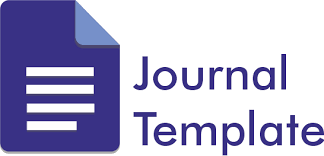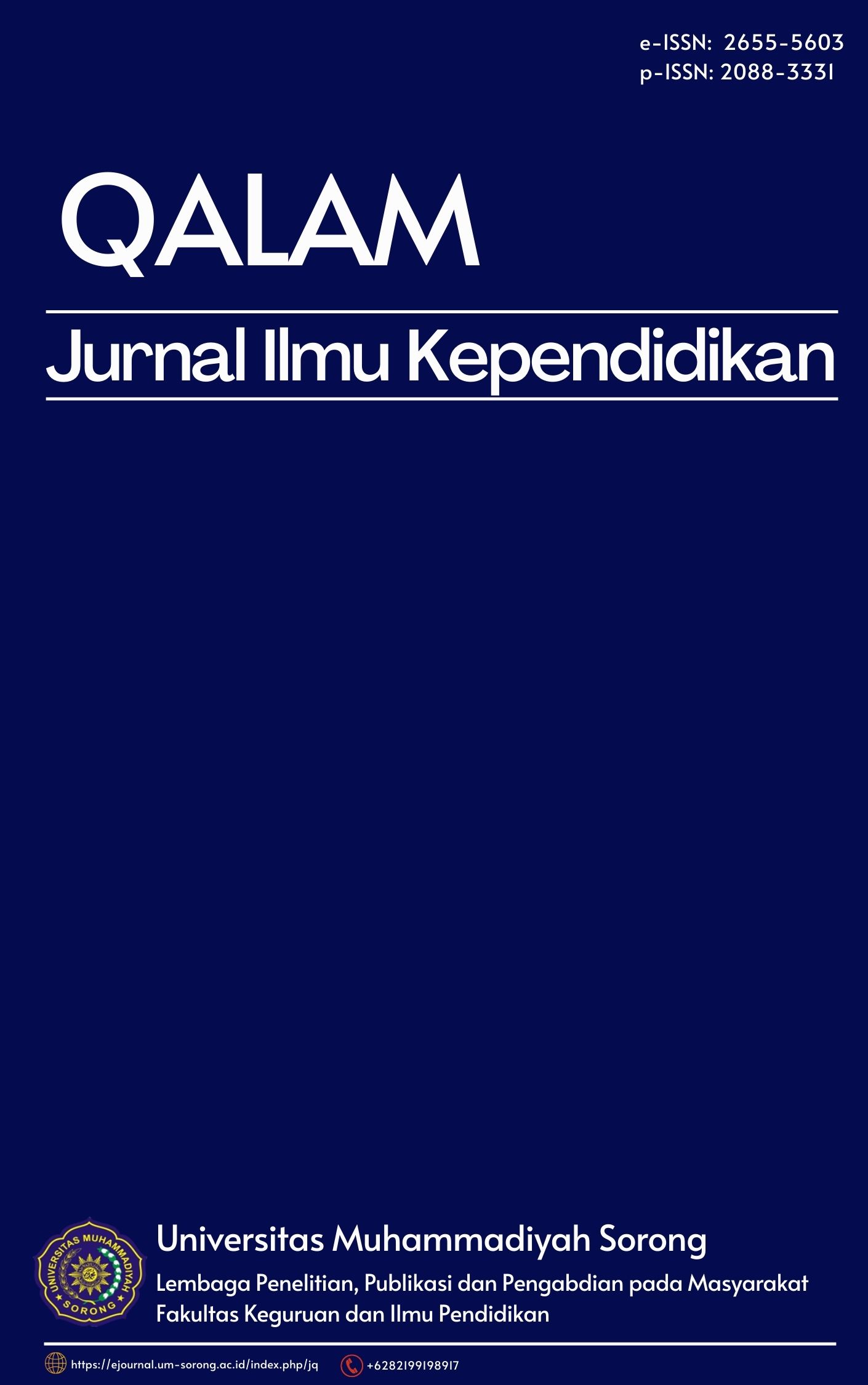Hubungan Minat Belajar Pendidikan Jasmani terhadap Hasil Belajar Sepakbola pada Siswa SMA Negeri 9 Makassar
DOI:
https://doi.org/10.33506/jq.v13i2.3959Abstract
Penelitian ini bertujuan untuk menganalisis minat belajar Pendidikan Jasmani terhadap hasil belajar sepakbola pada siswa SMA Negeri 9 Makassar. Penelitian ini menggunakan pendekatan kuantitatif dengan desain korelasional. Sampel dalam penelitian ini terdiri dari 30 siswa yang dipilih secara acak. Instrumen yang digunakan untuk mengukur minat belajar adalah kuesioner, sementara hasil belajar sepakbola diukur melalui tes keterampilan sepakbola. Data yang diperoleh dianalisis menggunakan teknik korelasi Pearson untuk mengetahui hubungan antara minat belajar dengan hasil belajar sepakbola. Hasil penelitian menunjukkan bahwa terdapat hubungan yang signifikan antara minat belajar Pendidikan Jasmani dengan hasil belajar sepakbola pada siswa SMA Negeri 9 Makassar. Semakin tinggi minat belajar siswa terhadap Pendidikan Jasmani, semakin baik hasil belajar mereka dalam keterampilan sepakbola. Temuan ini diharapkan dapat menjadi dasar bagi pengembangan strategi pengajaran yang lebih efektif dalam meningkatkan hasil belajar olahraga, khususnya sepakbola, di sekolah.
References
Cai, S. (2021) ‘Effects of learning physics using Augmented Reality on students’ self-efficacy and conceptions of learning’, British Journal of Educational Technology, 52(1), pp. 235–251. doi: 10.1111/bjet.13020.
Calderón, A. (2020) ‘A student-centred digital technology approach: The relationship between intrinsic motivation, learning climate and academic achievement of physical education pre-service teachers’, European Physical Education Review, 26(1), pp. 241–262. doi: 10.1177/1356336X19850852.
Ferriz-Valero, A. (2020) ‘Gamification in physical education: Evaluation of impact on motivation and academic performance within higher education’, International Journal of Environmental Research and Public Health, 17(12), pp. 1–16. doi: 10.3390/ijerph17124465.
Jannah, L. M. (2019) Metode penelitian kuantitatif. scholar.ui.ac.id. Available at: https://scholar.ui.ac.id/en/publications/metode-penelitian-kuantitatif.
Khalifa, N. E. (2022) ‘A comprehensive survey of recent trends in deep learning for digital images augmentation’, Artificial Intelligence Review, 55(3), pp. 2351–2377. doi: 10.1007/s10462-021-10066-4.
Leonhardt, M. (2021) ‘Are there differences in video gaming and use of social media among boys and girls?—a mixed methods approach’, International Journal of Environmental Research and Public Health, 18(11). doi: 10.3390/ijerph18116085.
Ma, D. (2021) ‘Review of data augmentation for image in deep learning’, Journal of Image and Graphics, 26(3), pp. 487–502. doi: 10.11834/jig.200089.
Opstoel, K. (2020) ‘Personal and social development in physical education and sports: A review study’, European Physical Education Review, 26(4), pp. 797–813. doi: 10.1177/1356336X19882054.
Prasetyo, A., & Wahyuni, D. (2020) ‘Hubungan Minat Belajar dengan Peningkatan Keterampilan Teknik Dasar Sepakbola’, Jurnal Pendidikan Olahraga, 12(2), pp. 45–52.
Raes, A. (2020) ‘Learning and instruction in the hybrid virtual classroom: An investigation of students’ engagement and the effect of quizzes’, Computers and Education, 143. doi: 10.1016/j.compedu.2019.103682.
Rahm, A. K. (2021) ‘Effects of realistic e-learning cases on students’ learning motivation during COVID-19’, PLoS ONE, 16(4). doi: 10.1371/journal.pone.0249425.
Rahmawati, E., & Kurniawan, H. (2021) ‘Pembelajaran Praktik dan Pengaruhnya Terhadap Minat Belajar Siswa dalam Pendidikan Jasmani.’, Pendidikan Jasmani, 9(3), pp. 78–85.
Santoso, H. (2019) ‘Peran Minat Belajar dalam Meningkatkan Hasil Belajar Siswa pada Mata Pelajaran Pendidikan Jasmani.’, Pendidikan Jasmani. Jurnal Olahraga dan Kesehatan, 10, pp. 34–40.
Suherman, U. (2022) ‘Pengaruh Aktivitas Kompetitif dalam Pembelajaran Olahraga terhadap Motivasi Siswa.’, Jurnal Ilmu Keolahragaan, 14(4), pp. 102–110.
Sweet, J. J. (2021) ‘American Academy of Clinical Neuropsychology (AACN) 2021 consensus statement on validity assessment: Update of the 2009 AACN consensus conference statement on neuropsychological assessment of effort, response bias, and malingering’, Clinical Neuropsychologist, 35(6), pp. 1053–1106. doi: 10.1080/13854046.2021.1896036.
Tannehill, D. (2021) ‘Continuing professional development for physical education teachers in Europe’, European Physical Education Review, 27(1), pp. 150–167. doi: 10.1177/1356336X20931531.
Vidergor, H. E. (2021) ‘Effects of digital escape room on gameful experience, collaboration, and motivation of elementary school students’, Computers and Education, 166. doi: 10.1016/j.compedu.2021.104156.
Wajdi, F. et al. (2024) Metode Penelitian Kuantitatif. repository.penerbitwidina.com. Available at: https://repository.penerbitwidina.com/publications/567818/metode-penelitian-kuantitatif.
Warburton, V. E. (2020) ‘Need satisfaction and need frustration as distinct and potentially co-occurring constructs: Need profiles examined in physical education and sport’, Motivation and Emotion, 44(1), pp. 54–66. doi: 10.1007/s11031-019-09798-2.
White, R. L. (2021) ‘Self-determination theory in physical education: A systematic review of qualitative studies’, Teaching and Teacher Education, 99. doi: 10.1016/j.tate.2020.103247.
Widiastuti, S. (2021) ‘Minat Belajar sebagai Faktor Penentu Keberhasilan Pendidikan Jasmani’, Jurnal Pendidikan dan Kesehatan Olahraga, 15(5), pp. 67–75.
Wijayanti, L. (2020) ‘Dampaknya terhadap Minat dan Partisipasi Siswa.’, Jurnal teknologi pendidikan jasmani, 8(1), pp. 19–25.
Zhu, Y. (2020) ‘University students’ online learning attitudes and continuous intention to undertake online courses: a self-regulated learning perspective’, Educational Technology Research and Development, 68(3), pp. 1485–1519. doi: 10.1007/s11423-020-09753-w.
Downloads
Published
How to Cite
Issue
Section
License

This work is licensed under a Creative Commons Attribution-ShareAlike 4.0 International License.
The article copyright is owned by the author and Qalam: Jurnal Ilmu Kependidikan

This work is licensed under a Creative Commons Attribution-ShareAlike 4.0 International License.




